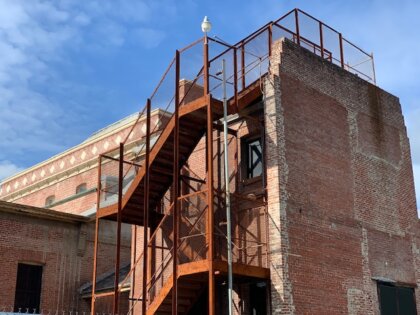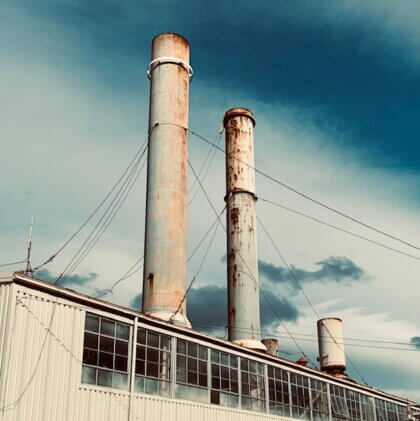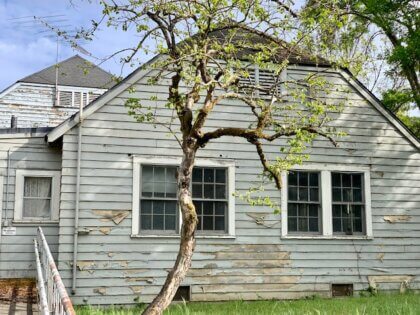SDC environmental report: ambitious, or impossible?
 By David Bolling | For The Sun
By David Bolling | For The Sun
As the state-imposed deadline for a plan to develop the Sonoma Developmental Center descends like a dense fog over Sonoma Valley, it is feared by many of those living nearby that time will run out before a broadly-supported solution can be adopted.
In the words of Tamara Galanter, a San Francisco attorney in the public interest law firm Shute, Mihaly & Weinberger, “it is an incredibly ambitious timeline for a project of this scope.”
Galanter, who is a consultant to the Sonoma Land Trust, explained in a January community workshop that the typical timeline for preparing an environmental impact report on a specific plan as complicated as the one for SDC is “at least 18 months.” Sonoma County, bowing to pressure from the State, is trying to shoehorn the complex process into 11 months.
That means a final plan for the 945-acre, iconic, historic and environmentally delicate property, will presumably have to be completed and adopted by September. That deadline, Galanter warns, “threatens to undermine the quality and responsiveness of the Specific Plan and draft EIR, and the ability of the public to have a real impact on the final project.”
Public response to three draft plans released by the County of Sonoma has been almost universally negative, primarily because they have proposed between 990 and 1,300 housing units. With an estimated 2.7 people per unit, that translates into a new community of between 2,700 and 3,500 people dropped into less than 200 acres, all accessed by a single road. Included in two versions of the plan is a luxury hotel.
All the development proposals involve the state selling parcels to the developers.

The County Supervisors walked back their three-plan option package in the wake of overwhelming public disapproval, but the economic facts as currently defined will still require a major housing component. First District Supervisor Susan Gorin has since suggested as few as 450 housing units – creating a SDC population of 1,215. Put in context, according to the 2020 census, the entire population of Glen Ellen is 734, down by 50 people since 2010.
The traffic impact of new residents – be they 1,215 people, or 3,500 – will by general consensus be huge. The impact will include a downgrade of traffic congestion on Arnold Drive to the lowest, meaning most congested, possible rating. And all those cars will not only impact people, but wildlife as well. Which brings us back to that troublesome EIR.
Performing an EIR that conforms to commonly-accepted “ecological performance standards” on the vast and varied property requires a level of research, study and analysis the imposed timeline probably can’t allow.
According to Jennifer Michaud, a senior ecologist with the Sebastopol law firm Prunuske Chatham, a comprehensive environmental review needs to focus on numerous natural resource issues, including wildlife and the critically important wildlife corridor that connects Sonoma Mountain with the Mayacamas mountain range across the Valley floor. That corridor is home to a variety of key species, including mountain lions, coyotes, beavers and river otters, along with rattlesnakes, Canada geese, American kestrels, northern spotted owls, black-tailed deer, raccoons, great egrets, great blue heron, wild turkeys, turkey vultures, skunks, opossums and western bobcats – not to mention the steelhead trout and Chinook salmon found in Sonoma Creek – among the 1,145 individual species on the property.
All that biological abundance requires careful management of the complicated water system that nurtures it while serving the institutional needs of the developed campus.
That water system, which includes two pumped storage reservoirs and an intricate network of creeks, requires careful management, says Michaud, to avoid damaging wildlife and the riparian areas and wetlands. The goal, she says, should be not simply to limit the damage from infrastructure development and re-use, but to identify “enhancement opportunities” that will improve the property’s ecological health.
That could include ensuring that runoff from development doesn’t result in erosion and contamination of the watershed, maintaining or improving groundwater recharge and committing to no net increase in impermeable surfaces. The goal of such measures, she says, would be to “ensure resilient and reliable water resources … in the context of climate change and drought.” Equally important for both the developed campus and the open space is sufficient stored water to provide capacity for fighting wildfires, a danger some analysts consider inevitable.
Confronting this rich swath of natural abundance is the state mandate that housing be the cornerstone of the developed campus. That’s both because housing (and most critically affordable housing) is desperately needed in the Valley’s inflated real estate market, and because it is the necessary driver of an economic equation that will make the future SDC financially sustainable. Unclear at this point is how much of the projected housing will be “affordable,” what “affordable” will really mean, and how much revenue from housing will be required to make the equation work.

To date, the public has not been privy to a cost-benefit analysis defining the annual fiscal nut that will have to be cracked to sustain the property. And clouding that picture is the fact that the State Department of General Services – which now effectively owns the facility – is adamantly requiring that the cost of mitigating the property – which would include elimination of toxic waste (like asbestos and lead), restoration of state and federally-listed historic structures, and upgrading water and power infrastructure – must be borne by whoever develops the property. Estimates of mitigation costs start at $100 million and head north.
Critics of this burden being left in the hands of those who develop the property ask how the state can, in good conscience, pass on the cost of mitigation when the state – through neglect and deliberate abandonment – is responsible for the problem to begin with. And as long as it remains unclear how much money will be required to make the property sustainable, critics find it hard to understand how the state can insist on a sustainable plan in such a short time with so little information.
At this point, a Notice of Preparation for an EIR scoping process to solicit comments from regulators and the public has been concluded, even though there is no definitive decision by the County Board of Supervisors on the population dimensions of the plan, and even without any study of the environmental impacts of new development on the property’s critical wildlife corridor.
Some stakeholders involved in the unfolding SDC drama have confidentially revealed an expectation that litigation will necessarily follow an EIR prepared in the narrow window allowed by the State’s deadline.
Typically, environmental lawsuits are filed against allegedly deficient EIRs, and can result in substantial – sometimes years-long – project delays. Hanging over the head of all parties involved is the state’s veiled threat that it could simply put the property up for sale and walk away.
— Photos by Val Robichaud
One thought on “SDC environmental report: ambitious, or impossible?”
Comments are closed.




My proposed comment to SDC EIR was,
“Null” Project Proposal
Pre-Zoning: Institutional
Specific Plan: Senior & Workforce Housing reuse.
And SSU/Sonoma Ecology Center “Climate Center”.
Thomas C Ells, Anthropologist
Civil & Environmental Engineer